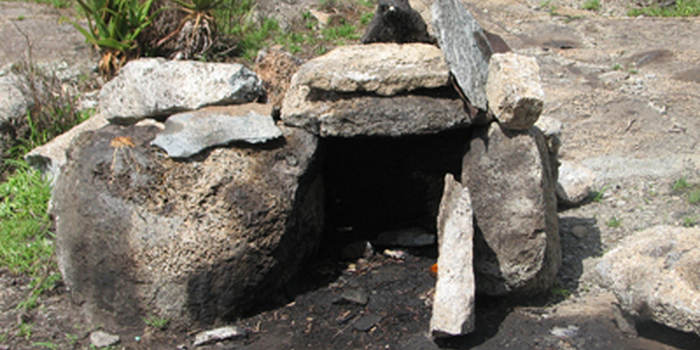Kisumu Governor Professor Peter Anyang’ Nyong’o visited the Got Ramogi in Siaya County on Wednesday, January 1, becoming the latest prominent figure to pay a maiden visit to the cultural site.
The visit comes a day after the Piny Luo Cultural Festival, which showcases the rich heritage of the Luo, both in Kenya and Uganda, was opened on Tuesday, December 31. The second day of the festival featured water-based sports, and wrestling, among other sports.
Former Prime Minister Raila Odinga officially opened the festival at the Migwena Cultural Grounds in Siaya. Governors from the area graced the event, which saw thousands of locals attend.
Why is Got Ramogi revered among the Luo? “Got Ramogi is not just a hill; it is a symbol of our shared history and the stories that connect us to our past,” Nyong’o explained in his social media post.
Got Ramogi in Siaya County.
Got Ramogi Hill holds a profound historical significance for the Luo community, as it is believed to be the first settlement point of the Luo people after their migration from South Sudan through Uganda.
Taking to his official X handle, Governor Nyong’o expressed his excitement to visit the site that holds a special place in the Luo Cultural Heritage. “Today, I had the privilege of visiting Got Ramogi, a site that holds deep historical and cultural significance for our community. Standing on this sacred ground, I was reminded of the strength, resilience, and unity of our ancestors who laid the foundation for our identity and heritage,” he said.
The hill symbolises the origins of the Luo tribe and serves as a reminder of their ancestral journey.
The figure of Ramogi Ajwang’, regarded as the father of the Luo nation, is central to this narrative, representing leadership and unity among the Luo people.
The hill is not only a geographical landmark but also a cultural repository that embodies various traditions, beliefs, and practices of the Luo community. It is associated with numerous cultural sites and shrines (hembko), each holding unique spiritual significance.
Rituals performed at these sites often involve offerings to Nyasaye (God) to ensure prosperity and blessings for the community. The presence of these shrines highlights the importance of spirituality in Luo culture, where ancestral worship and reverence for nature play crucial roles.
Got Ramogi is steeped in mythology, with various legends surrounding its features. Case in point, local beliefs suggest that one can encounter Ramogi himself at certain points on the hill.
The Rapogi Stone, a significant landmark at the entrance to Ramogi Hill, is said to have been used by Ramogi as an altar for prayers during times of drought.
Such myths contribute to a sense of identity and continuity within the community, reinforcing cultural values passed down through generations.
Mythology aside, the place is bedecked with rich biodiversity, including various species of flora and fauna unique to this ecosystem that will attract nature lovers.
Got Ramogi Hill serves as a vital cultural symbol for the Luo people, encapsulating their historical roots, spiritual beliefs, natural heritage, and contemporary relevance in tourism.
Ramogi Hill in Siaya County.


